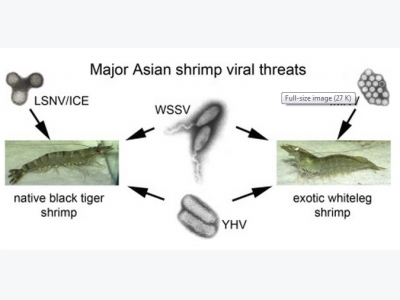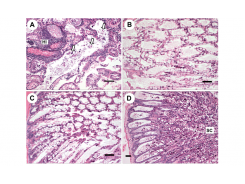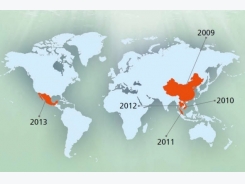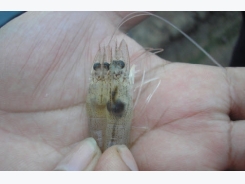Historic Emergence, Impact and Current Status of Shrimp Pathogens in Asia

It is estimated that approximately 60% of disease losses in shrimp aquaculture have been caused by viral pathogens and 20% by bacterial pathogens. By comparison, losses to fungi and parasites have been relatively small. For bacterial pathogens, Vibrio species are the most important while for viral pathogens importance has changed since 2003 when domesticated and genetically selected stocks of the American whiteleg shrimp Penaeus (Litopenaeus) vannamei (Boone 1931) replaced the formerly dominant giant tiger or black tiger shrimp Penaeus (Penaeus) monodon (Fabricius 1798) as the dominant cultivated species. For both species, white spot syndrome virus (WSSV) and yellow head virus (YHV) are the most lethal.
Next most important for P. vannamei is infectious myonecrosis virus (IMNV), originally reported from Brazil, but since 2006 from Indonesia where it was probably introduced by careless importation of shrimp aquaculture stocks. So far, IMNV has not been reported from other countries in Asia.
Former impacts of Taura syndrome virus (TSV) and infectious hypodermal and hematopoietic necrosis virus (IHHNV) on this species have dramatically declined due to the introduction of tolerant stocks and to implementation of good biosecurity practices.
Another problem recently reported for P. vannamei in Asia is abdominal segment deformity disease (ASDD), possibly caused by a previously unknown retrovirus-like agent.
Next most important after WSSV and YHV for P. monodon is monodon slow growth syndrome (MSGS) for which component causes appear to be Laem Singh virus (LSNV) and a cryptic integrase containing element (ICE).
Hepatopancreatic parvovirus (HPV) and monodon baculovirus (MBV) may be problematic when captured P. monodon are used to produce larvae, but only in the absence of proper preventative measures.
Since 2009 increasing losses with P. vannamei in China, Vietnam and now Thailand are associated with acute hepatopancreatic necrosis syndrome (AHPNS) of presently unknown cause. Despite these problems, total production of cultivated penaeid shrimp from Asia will probably continue to rise as transient disease problems are solved and use of post larvae originating from domesticated SPF shrimp stocks in more biosecure settings expands.
Related news
Tools

Phối trộn thức ăn chăn nuôi

Pha dung dịch thủy canh

Định mức cho tôm ăn

Phối trộn phân bón NPK

Xác định tỷ lệ tôm sống

Chuyển đổi đơn vị phân bón

Xác định công suất sục khí

Chuyển đổi đơn vị tôm

Tính diện tích nhà kính

Tính thể tích ao




 The role of selective breeding and biosecurity in…
The role of selective breeding and biosecurity in…  Diseases of Crustaceans - Acute Hepatopancreatic Necrosis Disease…
Diseases of Crustaceans - Acute Hepatopancreatic Necrosis Disease…